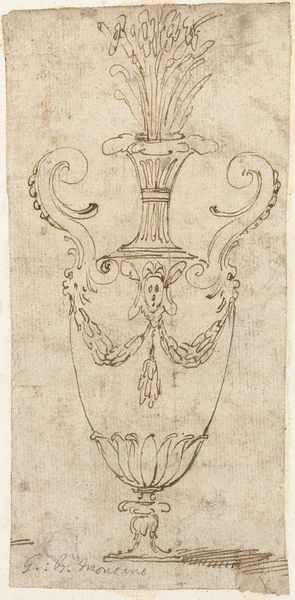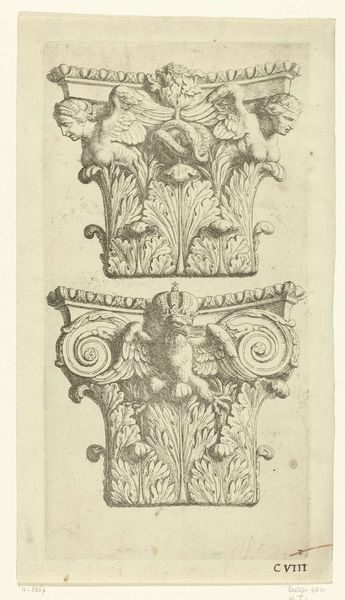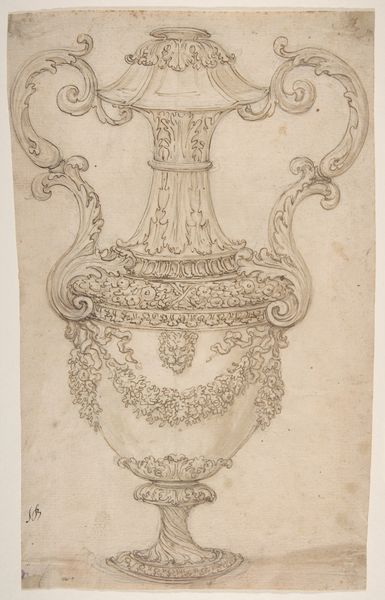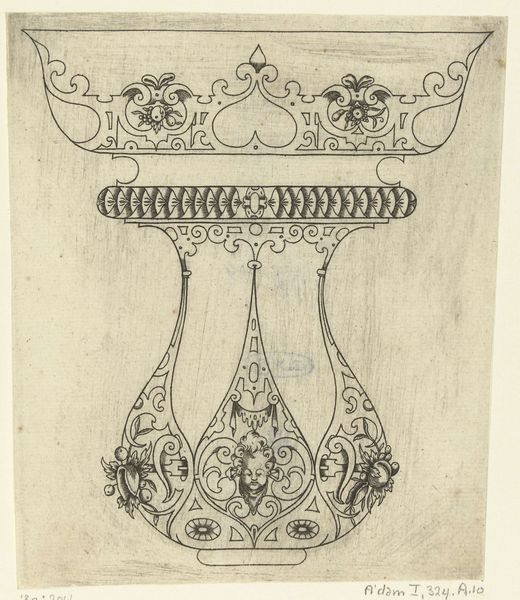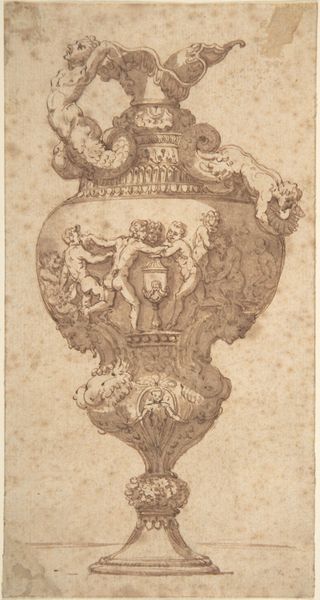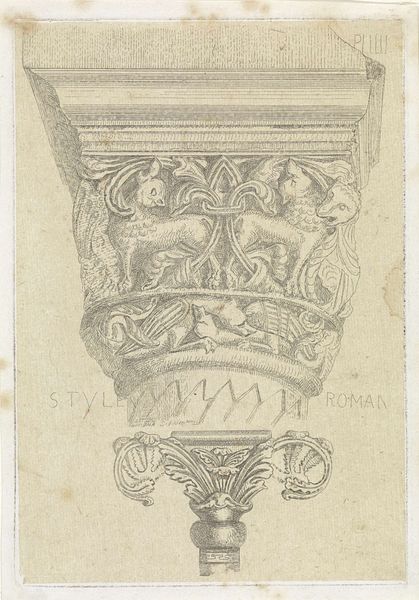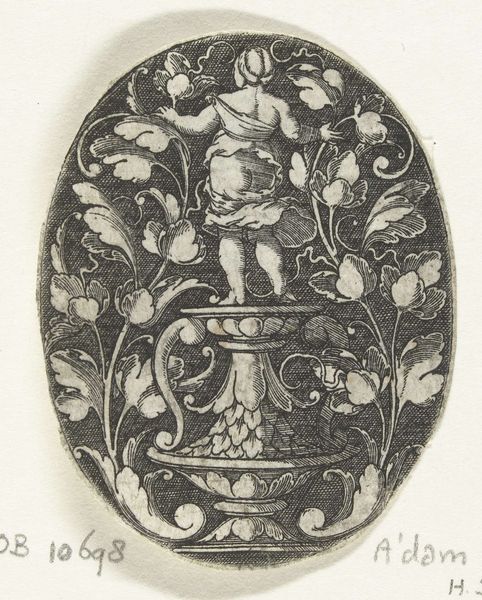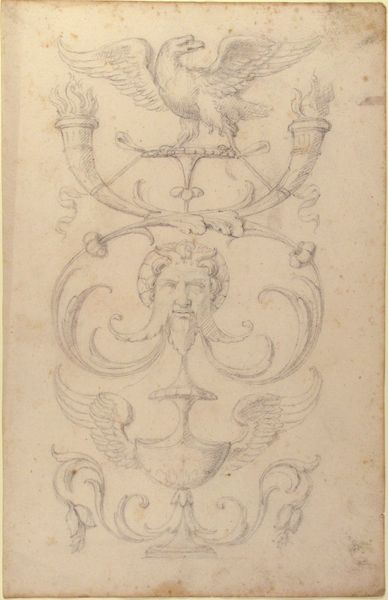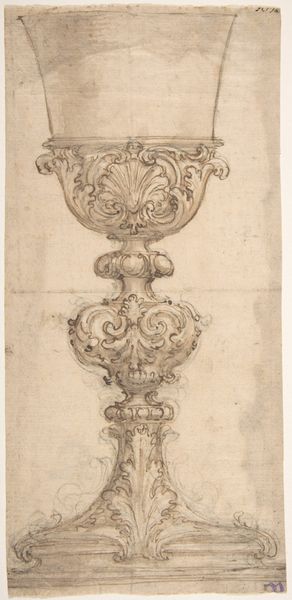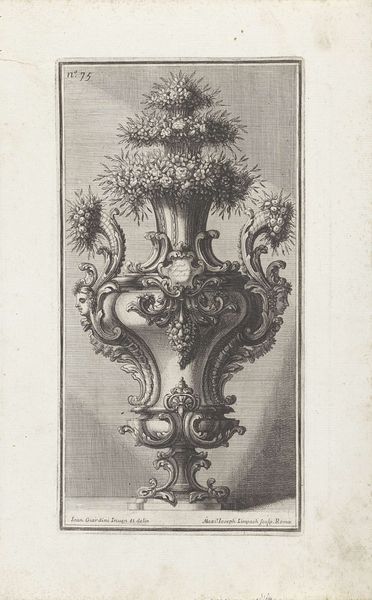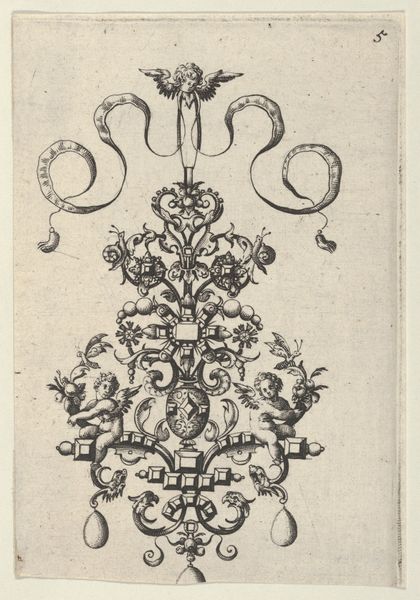
Outline of the Design for a Two-Handled Vase 1652 - 1725
0:00
0:00
drawing, ink, pen
#
drawing
#
baroque
#
ink
#
coloured pencil
#
pen
#
decorative-art
Dimensions: sheet: 4 5/16 x 2 3/8 in. (10.9 x 6 cm)
Copyright: Public Domain
Curator: Here we have "Outline of the Design for a Two-Handled Vase" by Giovanni Battista Foggini, likely created sometime between 1652 and 1725. It’s currently residing here at the Metropolitan Museum of Art. The piece is crafted using pen, ink, and what looks like coloured pencil on paper. What strikes you first about it? Editor: There's a ghostly elegance, a tentative vision clinging to the page. I immediately think of labor and fragility: someone conceptualized and materialized this decorative art piece as a vessel of meaning beyond functionality. The medium feels secondary; the execution seems simple yet considered. Curator: I see what you mean, a ghost of potential! The artist really leaves the essence open for interpretation with those soft, smudgy lines. You know, what's so interesting is how Foggini captures a particular moment of artistic thought through a casual material process that challenges our idea of "high art". Does the Baroque-ness hit you? All that florid potential rendered so fleetingly... Editor: Absolutely, the Baroque flamboyance is restrained by the nature of its form: a design. The decorative detail, particularly the foliage, is striking for me, and seems to teeter between careful planning and free improvisation. But also, look closely - this would've required materials – paper, ink, maybe even a carefully-made metal point—obtained through a chain of industry and trade that made the production possible. Who gathered what? Who made the paper? The artwork holds clues that reach beyond the gallery, I reckon. Curator: True, even a sketch has material roots connecting it to that world! And yes, there's a definite dance happening between intent and accident in how the ink bleeds and blurs in sections like the base. It has me imagining how a real piece would materialize Foggini's spirit and process in something real. The sketch invites us to dream with the original artisans. Editor: Exactly! Considering its utilitarian and decorative design function opens another question regarding art consumption, and access to functional luxury through commodification, and what labor was invested, consumed and appreciated, and by whom? What do you see for the audience when you see it here today? Curator: Today I see its permanence—in both the Met and our minds—achieved through accessible materials like humble ink and paper—becoming quite dear, and immortalized by the gesture of the artist. It's the spirit that matters: It seems as fresh as the day he put it on the page. Editor: Well said. It goes beyond that Baroque flamboyance and into material traces of intention, artistic networks, and enduring creation across centuries. A truly generative vase.
Comments
No comments
Be the first to comment and join the conversation on the ultimate creative platform.
